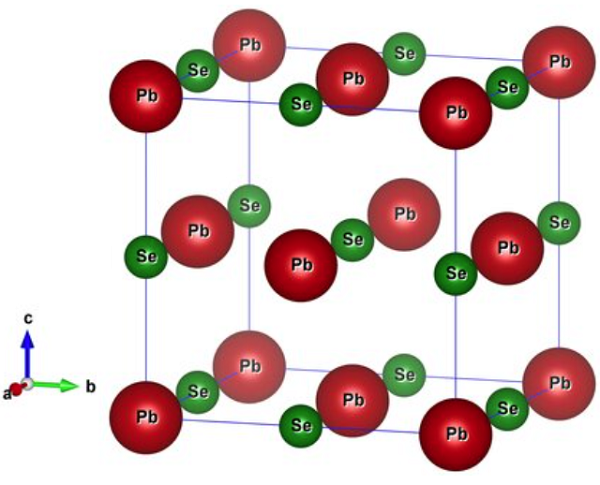The structure of zirconium carbide
Zirconium carbide (ZrC) is a potential coating, oxygen-gettering, or inert matrix material for advanced high-temperature reactor fuels. ZrC has demonstrated attractive properties for these fuel applications, including excellent resistance against fission product corrosion, retention capabilities, and hydrogen corrosion resistance. Like other carbides of the transition metals of Groups IV, V, and VI, Zirconium carbide exhibits an unusual combination of properties that are useful for refractory applications. These carbides combine the cohesive properties of covalently bonded ceramics (high melting point, high strength, and hardness) with the electronic properties of metals (high thermal and electrical conductivity). It is a gray metallic powder with a Cubic structure (Fm-3m)[1].

Zirconium carbide is a refractory and chemically stable compound that melts eutectically with carbon at 3123K. To improve the high-temperature stability, the resistance to chemical attack by fission products, and the retention of fission products, the ZrC coating layer is a candidate that can replace the SiC coating layer of the TRISO-coated fuel particle; the resulting particle is termed a ZrC-TRISO-coated fuel particle. The apparent drawback of the ZrC-TRISO coating may be that ZrC does not withstand oxidation in a massive air-ingress accident, though such an incident is highly hypothetical in modern HTGR designs[2].
ZrC-coated fuel particles have been developed in Japan since the early 1970s. The ZrC-coated fuel particles at the early stage of the development were characterized by a thick ZrC layer with a composition of C/Zr >1.0 and by the absence of the OPyC layer. A ZrC layer of this kind was called ‘zirconium-carb alloy,’ meaning ZrC–C alloy. Later, it was found that the retention of metallic fission products, especially 90Sr, by the zirconium-carb alloy was poor, presumably owing to a short circuit through the free carbon phase. It was also found from the irradiation experiments that the presence of the OPyC layer was essential for the mechanical integrity of the coated fuel particle. The emphasis was, therefore, placed on the development of ZrC-TRISO-coated particles with the stoichiometric composition of C/Zr = 1.0.
References
[1] Donald Z. Chaney. “Grain size dependence of thermally induced oxidation in zirconium carbide.” Journal of Materials Science 58 6 (2023): 2439–2455.
[2] Yutai Katoh. “Properties of zirconium carbide for nuclear fuel applications.” Journal of Nuclear Materials 441 1 (2013): Pages 718-742.


